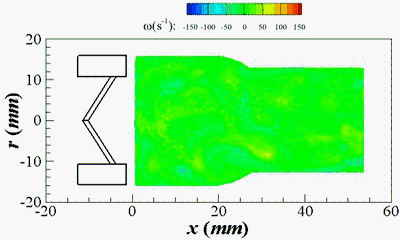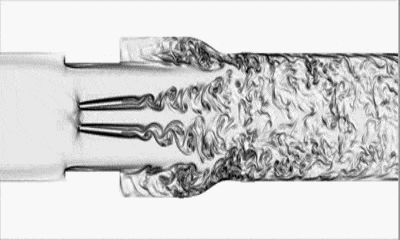The valves of the heart force efficient one-way flow of blood to the lungs and body. Valvular heart disease is a life-threatening disease that afflicts millions of people worldwide and leads to approximately 250,000 valve repairs and/or replacements each year. Malfunction of a native valve impairs its efficient fluid mechanic/hemodynamic performance. Artificial heart valves have been used since 1960 to replace diseased native valves and have saved millions of lives. Unfortunately, despite four decades of use, these devices are less than ideal and lead to many complications. For over 35 years, the Cardiovascular Fluid Mechanics Lab has applied engineering methodologies to look at prosthetic valve design and performance. Through quantitative testing, the lab has provided critical data that is used design better heart valves.
 |
 |
Select Publications
- Yoganathan, A. P., He, Z., & Casey Jones, S. (2004). Fluid mechanics of heart valves. Annu. Rev. Biomed. Eng., 6, 331-362.
- Dasi, L. P., Simon, H. A., Sucosky, P., & Yoganathan, A. P. (2009). Fluid mechanics of artificial heart valves. Clinical and experimental pharmacology and physiology, 36(2), 225-237.
- Dasi, L. P., Ge, L., Simon, H. A., Sotiropoulos, F., & Yoganathan, A. P. (2007). Vorticity dynamics of a bileaflet mechanical heart valve in an axisymmetric aorta. Physics of Fluids (1994-present), 19(6), 067105.
- Leo, H. L., Dasi, L. P., Carberry, J., Simon, H. A., & Yoganathan, A. P. (2006). Fluid dynamic assessment of three polymeric heart valves using particle image velocimetry. Annals of biomedical engineering, 34(6), 936-952.
- Yun, B. M., Dasi, L. P., Aidun, C. K., & Yoganathan, A. P. (2014). Computational modelling of flow through prosthetic heart valves using the entropic lattice-Boltzmann method. Journal of Fluid Mechanics, 743, 170-201.